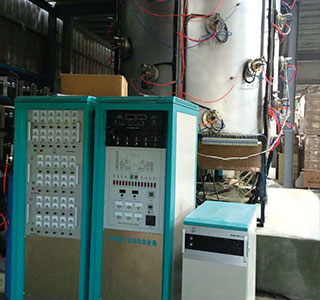Future timing technology vacuum technology is crucial for optical atomic clocks.
Vacuum chambers containing free floating atoms are at the heart of today's most sophisticated time measurement instruments. The laser pulse function is used as the time measurement generator for the latest generation of atomic clocks. Their precision is extremely high.

What is time? Neither physicists nor philosophers can answer this question. But this does not prevent people from dividing time into small pieces and measuring it as accurately as possible. Timekeeping tools such as ancient sundial or medieval mechanical clocks are an important development stage of the time measurement method we have used. In the 17th century, mathematician and physicist Christian Huygens achieved an important technical achievement. The pendulum clock he invented for the first time accurately divided the time into hours, minutes and seconds. Since then, more and more accurate timing tools have been developed. Today, the cesium atomic clock serves as the reference for official world standard time, with an error of only 1 second every 30 million years.
Cesium Atomic clock records world time
These modern timepieces do not have pendulums or hands, but use the cesium atom to "record" the passage of time. These helium atoms are heated to vaporization and then placed in a high vacuum tube. The low pressure ensures that the atoms do not collide with each other and pass through the vacuum chamber with high energy. These atoms are then subjected to microwave radiation. The right frequency (called the resonant frequency by physicists) changes the energy state of some atoms. They are "fired" and counted by the detector.
Now adjust the microwave frequency so that the maximum number of helium atomic energy states change accordingly. This number is stable at 9,192,631,770 Hz (that is, more than 9 billion oscillations per second). Conversely, when this number is reached, one second has elapsed. This is the basis for defining the length of one second in the SI International System of Units.
Accuracy is even higher than laser
In addition to the cesium radiation clock, the cesium fountain clock is also used as a reference clock for today's world time. In this type of clock, helium atoms are introduced into the vacuum chamber like a fountain and then radiated by the microwave. Since the resonance frequency of the atom can be determined more accurately using this technique, the error of the fountain clock is only 1 second every 40 million years.
The optical atomic clock using helium or neon atoms is more precise. In this type of clock, atoms are excited by ultra-high vacuum using a laser instead of a laser. When an atom changes its energy state, the frequency of the light can be referenced as a length of one second. The higher the frequency, the faster the electronic transition frequency, and the time can be divided into smaller intervals. The optical atomic clock "tick" is much faster than the cesium atomic clock, so the measured time interval is also more accurate. They may become the new timing tool for world time, so it is necessary to redefine the well-known time unit: one second. Regardless of this process, all types of atomic clocks require a vacuum chamber for the reference atom.

